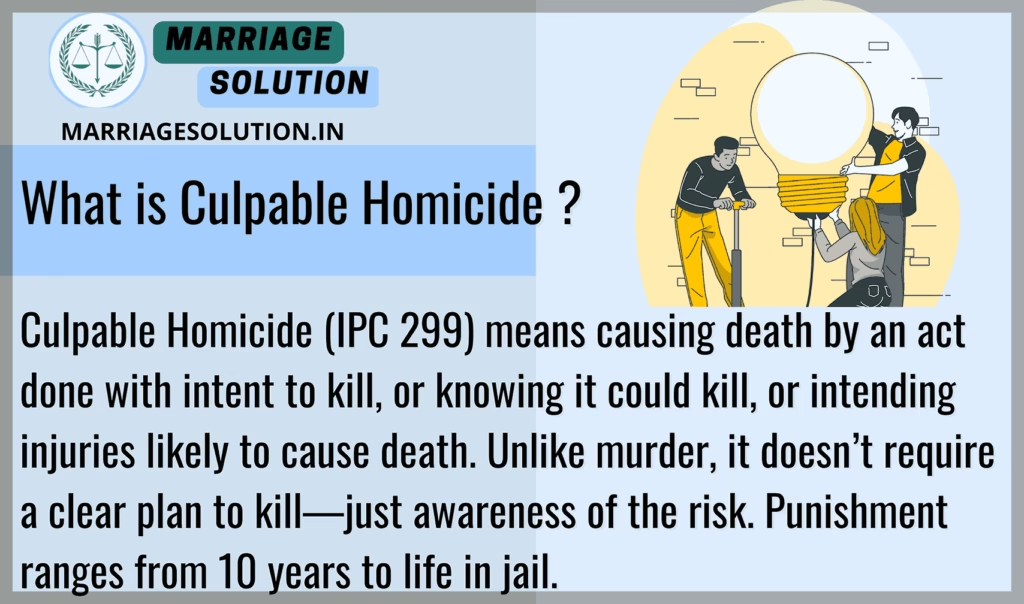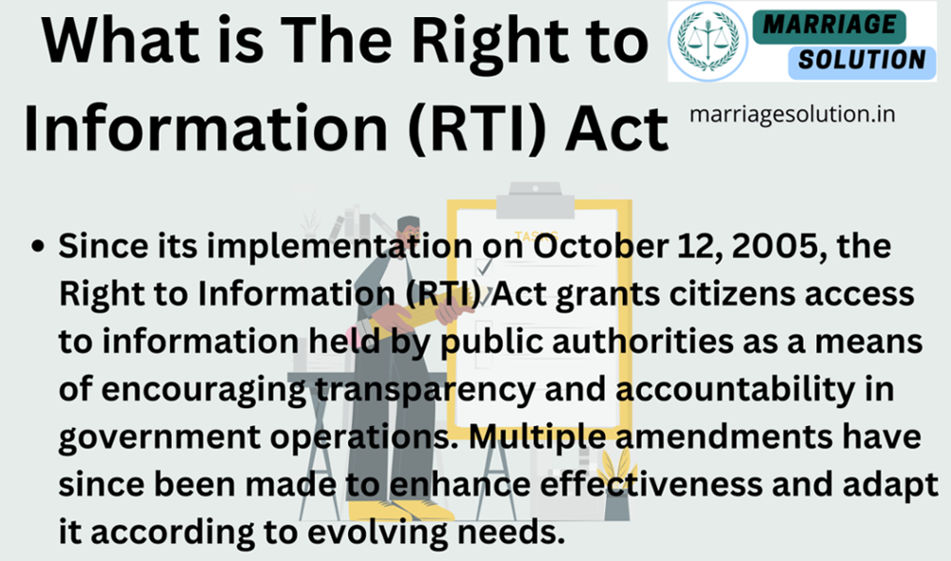Introduction of IPC 299
IPC Section 299 defines culpable homicide, which means causing the death of a person by doing an act either with the intention to kill, with the intention to cause serious injury that is likely to cause death, or with the knowledge that the act may result in death.
This law is important because it differentiates between an intentional killing (murder) and a killing that happened without full intention but with awareness of its potential consequences. Understanding this section is crucial in determining the severity of the crime and the punishment.
- Introduction of IPC 299
- What is IPC Section 299?
- Section 299 IPC in Simple Points
- Section 299 IPC Overview
- 10 Key Points of IPC 299 Explained in Detail
- 1. Meaning of Culpable Homicide
- 2. Three Main Elements of IPC 299To be considered culpable homicide, at least one of the following three conditions must be met:
- 3. Difference Between Culpable Homicide and Murder (IPC 302)
- 4. Intention vs. Knowledge in IPC 299
- 5. Examples of Acts That Amount to Culpable Homicide Several actions can be classified as culpable homicide:
- 6. Death Caused Due to a Pre-Existing Condition
- 7. When Death is Caused by Bodily Injury
- 8. When Killing an Unborn Child is NOT Culpable Homicide
- 9. Culpable Homicide vs. Death by Negligence (IPC 304A)
- 10. Punishment for Culpable Homicide
- Examples of IPC 299
- Section 299 IPC case laws
- 299 IPC Punishment
- 299 IPC Bailable or non bailable
- Section 299 IPC in short information
- IPC Section 299 FAQs
- If you need support with court proceedings or any other legal matters, don’t hesitate to reach out for assistance.
What is Culpable Homicide?
Culpable Homicide (IPC 299) means causing death by an act done with intent to kill, or knowing it could kill, or intending injuries likely to cause death. Unlike murder, it doesn’t require a clear plan to kill—just awareness of the risk. Punishment ranges from 10 years to life in jail.

Section 299 IPC in Simple Points
1. Meaning of Culpable Homicide
Culpable homicide means killing a person by doing an act that is dangerous and likely to cause death. However, the key difference between culpable homicide and murder is that in culpable homicide, the person may not have had a clear intention to kill, but they knew their actions could cause death.
For example:
- If a person hits someone on the head with a heavy stone, knowing that it may cause serious injury and possibly death, it is culpable homicide.
- If a person pushes someone from a tall building, it is also culpable homicide because the person knew that falling from such a height could cause death.
Even if the person did not want to kill, they are still responsible for the death because they acted knowingly.
2. Three Conditions for Culpable Homicide
An act is considered culpable homicide if it fulfills at least one of the following three conditions:
- Intention to kill – If a person directly aims to kill someone, like stabbing them in the heart.
- Intention to cause serious injury – If a person attacks another in a way that is likely to kill, like hitting them with a heavy weapon.
- Knowledge of danger – If a person does something that they know could cause death, like setting a house on fire while people are inside.
For example:
- If a person fires a gun in a crowded area, knowing it could hit someone and kill them, it is culpable homicide.
- If a person poisons someone’s food, knowing it could lead to death, they are also guilty under IPC 299.
Even if death was not the direct intention, the awareness of the possibility of death makes the act culpable homicide.
3. Difference Between Culpable Homicide and Murder (IPC 302)
A major confusion in law is the difference between culpable homicide and murder. The main difference is:
- Culpable Homicide (IPC 299) – The act was dangerous and likely to cause death, but the person may not have had a 100% clear intention to kill.
- Murder (IPC 302) – The person had a clear and definite intention to kill.
For example:
- If A hits B with a stick on the head, and B dies, it is culpable homicide because A may not have intended to kill but knew the act was dangerous.
- But if A stabs B in the chest multiple times, it is murder because the attack clearly shows a full intention to kill.
The difference is important because murder has a stricter punishment (death or life imprisonment), while culpable homicide may have a lighter punishment depending on the case.
4. Acts That Amount to Culpable Homicide
Several actions can be classified as culpable homicide:
- Hitting someone on the head with a sharp or heavy object, leading to their death.
- Pushing someone into deep water who cannot swim, resulting in their drowning.
- Driving a car over someone intentionally, knowing it could kill them.
- Attacking a pregnant woman, causing the death of her unborn child after birth.
Even if the person did not want the victim to die, they are still responsible under IPC 299 because they knew their actions were dangerous.
5. Punishment for Culpable Homicide
The punishment under IPC Section 299 depends on the level of intention and knowledge behind the act:
- If the person had the intention to kill → Life imprisonment or up to 10 years in jail + fine.
- If the person only had knowledge that the act could cause death (not full intention) → Up to 10 years in jail or fine, or both.
For example:
- If a person attacks another with a metal rod, intending to cause serious injury, and the victim dies, they can get life imprisonment or up to 10 years.
- If a person throws a heavy rock from a bridge, knowing it could hit someone but not specifically intending to kill, and the rock kills someone, they could get up to 10 years in jail.
The punishment varies based on how serious the crime was and whether there was full intention to kill or just awareness of danger.
Section 299 IPC Overview
IPC Section 299 ensures that people who knowingly or intentionally cause death are held accountable. It provides a fair system where punishment is based on the seriousness of the crime. The law protects innocent people from being wrongly charged with murder while ensuring justice for victims.
10 Key Points of IPC 299 Explained in Detail
1. Meaning of Culpable Homicide
Culpable homicide means causing a person’s death due to an intentional or knowingly dangerous act. Unlike accidents where the person had no idea death could occur, culpable homicide involves either an intent to kill or an awareness that the act may cause death.
For example:
- If a person stabs another person in the chest, knowing that it can lead to death, it is culpable homicide.
- If a person hits someone on the head with a heavy rod, knowing that it might cause serious injury leading to death, this is also culpable homicide.
2. Three Main Elements of IPC 299To be considered culpable homicide, at least one of the following three conditions must be met:
- The act was done with the intention to cause death (e.g., stabbing a person in a vital organ).
- The act was done with the intention to cause serious bodily harm that could lead to death (e.g., breaking a person’s skull with a stone).
- The act was done with the knowledge that it was likely to cause death (e.g., setting fire to a house knowing people are inside).
Even if death was not the person’s goal, if they knew their actions could lead to death and proceeded anyway, it falls under culpable homicide.
3. Difference Between Culpable Homicide and Murder (IPC 302)
One of the most important distinctions in criminal law is between culpable homicide (IPC 299) and murder (IPC 302).
- Culpable Homicide: The accused knew that their actions could cause death, but death was not 100% certain.
- Murder: The accused was certain that death would occur due to their actions.
For example:
- If A hits B with a stick on the head, leading to B’s death, it could be culpable homicide if A only meant to harm B but not necessarily kill him.
- However, if A stabs B multiple times in the chest, it is murder because A’s actions clearly show an intention to kill.
This distinction is important because culpable homicide has a lower punishment than murder.
4. Intention vs. Knowledge in IPC 299
Culpable homicide can happen due to intention or knowledge:
- Intention: If a person deliberately attacks someone in a way that can cause death, it is culpable homicide.
- Knowledge: Even if a person does not intend to kill but knows that their actions may result in death, it is still culpable homicide.
For example:
- If a driver drives a truck at full speed into a crowded street, knowing that it might kill someone, it is culpable homicide, even if the driver did not intend to kill anyone specifically.
5. Examples of Acts That Amount to Culpable Homicide Several actions can be classified as culpable homicide:
- Hitting someone with a heavy object in a fit of rage.
- Pushing someone from a high place, knowing they could die.
- Giving poison to someone with the knowledge that it can kill.
- Firing a gun in a public area, knowing that it may hit someone.
These acts may not always be murder, but since the person knew their actions could lead to death, they fall under culpable homicide.
6. Death Caused Due to a Pre-Existing Condition
Sometimes, a victim may already have a health condition, and an attack on them accelerates their death. Even in such cases, the attacker is guilty of culpable homicide.
Example:
- If A punches B, and B has a weak heart, leading to B’s death, A is still responsible for culpable homicide, even if B would have survived without the heart condition.
The law states that if a person’s act speeds up death, they are responsible for the death, regardless of the victim’s health.
7. When Death is Caused by Bodily Injury
If a person attacks another person, causing serious bodily injury, and that injury later leads to death, the attacker is still guilty of culpable homicide.
Example:
- If A attacks B with an iron rod, breaking B’s ribs, and B later dies due to internal bleeding, A has committed culpable homicide, even if he did not directly kill B.
The law holds a person responsible not just for their direct actions but also for the consequences of those actions.
8. When Killing an Unborn Child is NOT Culpable Homicide
Killing a child inside the mother’s womb is not considered culpable homicide under IPC 299. However, if any part of the child has been born, even if the child has not breathed yet, and someone causes its death, it is culpable homicide.
Example:
- If A injures a pregnant woman, causing her to have a miscarriage, it is not culpable homicide.
- However, if A attacks a newborn baby and kills it, it is culpable homicide, even if the baby had not taken its first breath.
9. Culpable Homicide vs. Death by Negligence (IPC 304A)
- Culpable homicide (IPC 299) involves intention or knowledge of causing death.
- Death by negligence (IPC 304A) happens when a person accidentally causes death due to careless behavior.
Example:
- A driver driving recklessly and hitting a pedestrian is not culpable homicide, but it is death by negligence (IPC 304A).
- A person driving a car into a group of people intentionally is guilty of culpable homicide.
10. Punishment for Culpable Homicide
The punishment under IPC 299 depends on the level of intention and knowledge:
- If the act was done with the intention to cause death, the punishment is life imprisonment or up to 10 years in prison, plus a fine.
- If the act was done with knowledge but without intention, the punishment is up to 10 years in prison or a fine, or both.
Examples of IPC 299
Example 1: A Violent Attack Leading to Death
A person gets into a fight and hits another person’s head with an iron rod. The injured person later dies from brain injuries.
- The attacker may not have intended to kill but knew that hitting someone on the head with force could result in death.
- This qualifies as culpable homicide under IPC 299.
Example 2: Reckless Fire Leading to Death
A person sets fire to a small shop without checking if anyone is inside. A person trapped inside dies.
- The person may not have wanted to kill anyone, but they knew that fire could cause death.
- This is culpable homicide (IPC 299) because the person’s actions resulted in death due to recklessness.
Section 299 IPC case laws
1. Reg vs. Govinda (1876)
- A man kicked and hit his wife, leading to internal injuries and death.
- The court ruled it was culpable homicide, not murder, as he did not have the intention to kill but still caused her death.
- Result: Convicted under IPC 299, with a lighter punishment than murder.
2. State of Andhra Pradesh vs. Rayavarapu Punnayya (1976)
- The accused beat a person severely, leading to the victim’s death.
- The Supreme Court clarified that culpable homicide can be of different degrees, depending on intention and knowledge.
- Result: Convicted under IPC 299, with imprisonment.
3. Kusa Majhi vs. State of Orissa (1985)
- The accused attacked a person with an axe, which caused death.
- The court ruled that the attacker had knowledge that the act could cause death, but it was not murder because there was no full intent to kill.
- Result: Punishment under IPC 299, not IPC 302 (murder).
4. State of Karnataka vs. Vedanayagam (1994)
- A person drove a vehicle recklessly into a crowded market, leading to a person’s death.
- The accused was aware that driving at high speed in a crowded area could lead to death.
- Result: Convicted under IPC 299 for reckless homicide.
5. Virsa Singh vs. State of Punjab (1958)
- The accused stabbed a person in the stomach, and the victim died.
- The Supreme Court ruled that this was murder (IPC 302) rather than culpable homicide (IPC 299), because stabbing in the stomach was a clear intention to cause death.
- Result: Conviction under IPC 302, not IPC 299.
299 IPC Punishment
1. If the act was done with the clear intention to kill:
- Punishment: Life imprisonment or up to 10 years.
- Fine: A fine may also be imposed by the court.
2. If the act was done with knowledge (but no clear intention) that death could happen:
- Punishment: Up to 10 years in prison, or fine, or both.
The severity of punishment depends on whether the person had a clear intent to kill or just knowledge that the act could cause death.

299 IPC Bailable or non bailable
- IPC 299 is a non-bailable offense.
- This means that bail is not granted automatically, and the accused must apply for bail in court.
- The court decides based on the seriousness of the case and whether the person is a danger to society.
Section 299 IPC in short information
| IPC Section | Offense | Punishment | Bailable/Non-Bailable | Cognizable/Non-Cognizable | Trial |
|---|---|---|---|---|---|
| IPC 299 | Culpable Homicide (Causing death with intent or knowledge) | Life imprisonment or up to 10 years + Fine | Non-Bailable | Cognizable | Trial by Court of Session |
IPC Section 299 FAQs
What is the difference between IPC 299 (culpable homicide) and IPC 302 (murder)?
Example: If a person hits someone in a fight, and they die, it may be IPC 299. But if the person stabs someone in the heart with full intention, it is IPC 302.
IPC 299 (culpable homicide) applies when a person causes death but does not have a fully planned and deliberate intention to kill.
IPC 302 (murder) applies when there is a clear and deliberate intention to kill or the act is done with extreme cruelty.
What are the key elements of IPC 299?
To prove an offense under IPC 299, three things must be shown:
- A person did an act that caused death.
- The act was done with the intention of causing death or at least with the intention of causing bodily harm likely to cause death.
- The person had knowledge that the act could result in death.
If all three conditions are met, the offense is culpable homicide under IPC 299.
Can a person get bail in IPC 299 cases?
The court will decide based on the case details, seriousness, and whether the accused is a risk to society.
No, IPC 299 is a non-bailable offense.
This means the accused cannot get bail automatically and must apply to the court.
What is the punishment for IPC 299?
The punishment depends on intention and knowledge:
- If the act was done with full intention to kill: Life imprisonment or up to 10 years + fine.
- If the act was done with knowledge that death could happen (but no clear intent to kill): Up to 10 years in prison, or fine, or both.
The court decides the punishment based on the severity of the act.
Can IPC 299 be converted into IPC 302 (murder)?
Yes, in some cases. If the court finds that the accused had a clear, deliberate intention to kill, the case may be upgraded to IPC 302 (murder), which has a harsher punishment (death penalty or life imprisonment).
Example: If someone shoots another person in the chest, claiming it was accidental, but the court finds proof of clear intent, the charge can be changed from IPC 299 to IPC 302.
If you need support with court proceedings or any other legal matters, don’t hesitate to reach out for assistance.
Court or any other marriage-related issues, our https://marriagesolution.in/lawyer-help-1/ website may prove helpful. By completing our enquiry form and submitting it online, we can provide customized guidance to navigate through the process.
Right to Information RTI act :Your Comprehensive Guide (Part 1)
The Right to Information (RTI) Act : Explore the essence of the Right to Information (RTI) Act through this symbolic image. The image features legal documents, emphasizing the importance of transparency and accountability in governance. The scales of justice represent…
What is Article 371 of Indian Constitution ?
Article 371 of the Indian Constitution grants special provisions to specific states and regions within India, addressing their unique historical, social, and cultural circumstances. These provisions aim to accommodate diverse needs and protect cultural identities within the constitutional framework.
Indian Labour law : Your Comprehensive Guide (Part 1)
The purpose of labour laws is to safeguard employees and guarantee equitable treatment at the workplace, encompassing aspects such as remuneration, security, and perks. These regulations establish a secure ambiance by imposing minimum wage requirements, ensuring factory safety measures are…
GST :Your Comprehensive Guide (Part 1 – Understanding the Basics)
The Goods and Services Tax (GST) is like a big change in how we pay taxes in India. It started on July 1, 2017, and it’s here to simplify things. Before GST, we had many different taxes, and it could…





